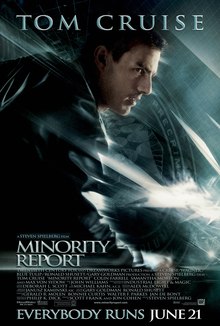I want to share an example of Big Data. It's called predictive policing. Idea is a simple one. Instead of asking how to solve existing crimes, the system is created to answer a different question. Crimes are going to happen. Given that crimes are happening, what is the pattern in crime statistics? How can we predict where and what kinds of crimes are to happen?
It's not quite predictive as "precogs" in Minority Report. But the idea is powerful one. If all crime statistics are collected and plotted, there are patterns. Shifting crime-prone area can be foreseen by someone looking at all data points. Police department can then use the data to allocate resources at right places to handle anticipated crimes.
The next step can be seeing how policy presence affects the crime pattern. Effectively this predictive policing system will allow policy department to track how well they are doing and how criminals react to policy officer's response. Imagine iterating on this idea on matter of days. That could have profound implication to improving the crime statistics.
One key thing that must happen to realize the benefit of Big Data is collecting data. It must be easy for police officers to share data among multiple departments. Once this sharing of data is in place, the next thing is navigating through data. System must allow user to answer his/her questions. System should also suggest questions for user to ask.
Although this example is about predictive policing, it can be applied anywhere Big Data modeling can be useful. It could be used in employee turnover, grocery shopping habit and traffic accidents just to name a few. This Big Data will be a tremendous area of growth as more and more data become available online and easier to aggregate.
 |
| We may not be relying on "precogs", but predictive policing may come close; thanks to Big Data |
The next step can be seeing how policy presence affects the crime pattern. Effectively this predictive policing system will allow policy department to track how well they are doing and how criminals react to policy officer's response. Imagine iterating on this idea on matter of days. That could have profound implication to improving the crime statistics.
One key thing that must happen to realize the benefit of Big Data is collecting data. It must be easy for police officers to share data among multiple departments. Once this sharing of data is in place, the next thing is navigating through data. System must allow user to answer his/her questions. System should also suggest questions for user to ask.
Although this example is about predictive policing, it can be applied anywhere Big Data modeling can be useful. It could be used in employee turnover, grocery shopping habit and traffic accidents just to name a few. This Big Data will be a tremendous area of growth as more and more data become available online and easier to aggregate.
No comments:
Post a Comment